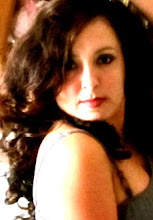 Against a magical scene of blossoming trees, budding flowers, rays of sunshine, occasional rainbows arching across the blue skies amid the spring raindrops, and singing birds, a festival of life is celebrated by Persians all around the world.
Against a magical scene of blossoming trees, budding flowers, rays of sunshine, occasional rainbows arching across the blue skies amid the spring raindrops, and singing birds, a festival of life is celebrated by Persians all around the world.Norouz and its marvelous traditions was celebrated by ancient Persians and has been handed down through centuries to today's Iranians.
The most notable ceremony is on the first day of spring when the year is anew. Let me tell you just a little about it:
A Haft Seen cloth of Norouz is spread and consists of seven items starting with the letter "S":
1. Sabzeh: sprouted seeds of wheat, tied up with a colorful ribbon, symbolic for life-
2. Sonbol: hyacinth, symbolic for spring-
3. Seer and Serkeh: garlic and vinegar symbolic for throwing out ill spirit-
4. Somagh and Senjed: sumaq and lotus fruit, symbolic for healing and love-
5. Seeb: apple, symbolic for beauty-
6. Sekeh: coins, symbolic for wealth-
7. Samanoo: decadent wheat pudding which takes hours to prepare, symbolic for patience-
Also present on the cloth of Haft Seen, a bowl with a tiny gold fish for youth, sweet treats and nuts for sweetness and abundance of life, mirror for reflection; that all our acts will come back to us one day, candles for light, colored eggs for fertility, rose water for purity, Seville orange floating in water symbolic for earth in space, and Avesta, the sacred book of Zoroaster (ancient Persian messenger of good will on earth) or Shahnameh, the legendary collection of poems and stories by Persian poet, Ferdowsi.
Norouz, marks the beginning of the new year on Iran's current calendar and is the first day of spring based on the Vernal Equinox. This year, the United Nations' general assembly acknowledged Norouz on the UN calendar after nearly 3000 years of history.
On Norouz, youngsters receive gifts and gold coins, often hidden somewhere on the Haft Seen Cloth. The popular belief is that the fictional aged bearded man, dressed in red and green costume, known as "Uncle Norouz" kindly brings in the gifts and hides them for the kids. His generosity is appreciated whether he's real or not! During the 13 days of Norouz, Haji Firouz, a man of many musical talents, dressed in brightly colored clothes, painted face, dancing, singing, and playing tambourine, brings in the good cheer to streets and alleys.
Several days prior to Norouz, houses are cleaned, trees are planted, flower seeds are germinated, and new clothes, shoes, and gifts are purchased. On the last Tuesday evening of the year, just before Norouz, bonfires are lit, and joyful people dance and cheer in anticipation for the coming new year.
During the festival of Norouz, people often place aside old grudges and hurt feelings, renewing a spirit of friendship and shared gratitude for health, wealth, and happiness. Families visit one another, entertain with sweets, nuts, seasonal fruits, and large feasts of many gourmet dishes. The Norouz dinner is often a large stuffed fish, dill rice, noodle and bean soup, and many side dishes and desserts.
On the last day of Norouz, the 13th, an outdoor picnic is planned so families would head outdoors and enjoy the refreshing spring air. Norouz means new day and marks the nature's renewal and rebirth of all living creatures. Perhaps the most magnificent of all Persian traditions, Norouz holds a treasured spot in the hearts of millions.
Aside from festivities, Norouz is the time for acts of kindness. Every year, it is customary to pledge to assist others in need. Everyone can lend a hand to someone less fortunate. May the spirit of Norouz reside all through the year and for many years to come.
Happy Norouz! or as said in Farsi: Norouz Pirouz!

No comments:
Post a Comment